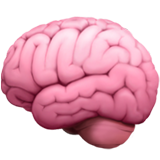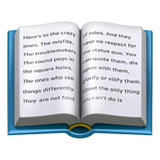The Complete Guide to the Russian Alphabet with Pronunciation
When you first look at the Russian alphabet, it might feel like you’re staring at a secret code. Letters like Ж, Ы, or Ю can seem like symbols from a sci-fi movie. But don’t worry — every fluent Russian speaker today once felt the same way.
In this complete guide, we’ll walk through each letter of the Russian alphabet and help you understand how to read, pronounce, and use them. Whether you want to travel, study, or connect with Russian-speaking friends, mastering the alphabet is your first real step. And it’s an exciting one.
 A Brief History of the Russian Alphabet
A Brief History of the Russian Alphabet
The Russian alphabet is based on Cyrillic script, which dates back to the 9th century. It was created by two Byzantine brothers — Saint Cyril and Saint Methodius, missionaries who wanted to help Slavic peoples read religious texts in their own languages.
Their original script, known as Glagolitic, was soon replaced by the simpler and more practical Cyrillic. Over centuries, it evolved — especially under reforms by Peter the Great in the 18th century and later Soviet orthographic changes.
Today, the modern Russian alphabet has 33 letters, and while it may look unfamiliar, many of the sounds are quite similar to English. Once you crack the code, the whole language opens up to you.

 Why Learning the Alphabet First is Crucial
Why Learning the Alphabet First is Crucial
Many learners try to skip the alphabet and jump straight into words or phrases. But this leads to bad pronunciation habits and confusion. Unlike English, Russian spelling is fairly phonetic — once you know the rules, you can pronounce almost anything correctly.
So before diving into grammar, conversations, or Russian TikToks — take the time to master this foundation.
- ✅ It helps with pronunciation
- ✅ You’ll read menus, signs, and messages
- ✅ You’ll type and text in Russian
- ✅ You’ll build confidence
 Overview: 33 Letters in the Russian Alphabet
Overview: 33 Letters in the Russian Alphabet
The alphabet is comprised of 10 vowels, 21 consonants, and 2 special signs that modify sounds. Let’s break them down in a simple, logical way.
 Vowels (Гласные)
Vowels (Гласные)
Russian vowels influence not only the sound of the syllable but also whether the consonant before them is hard or soft. They are also crucial for word stress, which affects pronunciation and even meaning.
| Letter | Sound | Example | Notes | Play |
|---|




 Consonants (Согласные)
Consonants (Согласные)
Russian consonants are either hard (твёрдые) or soft (мягкие), and this can completely change the meaning of a word. Some consonants become soft depending on the vowel that follows them (И, Е, Ё, Ю, Я).
| Letter | Sound | English Equivalent | Notes | Play |
|---|
 Flashcard tip: Hear the hard/soft contrast
Flashcard tip: Hear the hard/soft contrast
Use minimal pairs like лук (hard 'l' - onion) vs люк (soft 'l' - hatch), or бил (hard 'b' - he was hitting) vs пил (hard 'p' - he was drinking) to train your ear.
 The Two Signs: Ь and Ъ
The Two Signs: Ь and Ъ
Russian has two letters that have no sound on their own — but they modify how you pronounce the letters around them.
- Ь (soft sign) makes the preceding consonant soft:
мать (mother), конь (horse) - Ъ (hard sign) creates a pause and hard pronunciation:
подъезд (entrance), объект (object)
 Reading Words
Reading Words
Let’s apply what you’ve learned by reading real Russian words:
| Word | Pronunciation | Meaning | Play |
|---|
 Common Mistakes Beginners Make
Common Mistakes Beginners Make
- Misreading similar-looking letters: Remember that В = V, not B; Р = R, not P; and Н = N, not H.
- Ignoring stress: The letter О is only pronounced [o] when stressed, otherwise it’s [a]. The word молоко (milk) is pronounced [məlɐˈko].
- Confusing soft/hard sounds: The difference is crucial. бить (to hit) is not the same as пить (to drink). Always practice out loud — Russian is a very phonetic language, so your mouth needs training just like your brain.
 What to Do Next?
What to Do Next?
- Now that you've mastered the letters, return to our main guide on how to start learning Russian to dive into grammar and your first conversations.
- Make flashcards with sound + example word.
- Practice writing the alphabet by hand.
- Try typing in Russian — switch your keyboard layout.
- Read children's books or menus — simple vocabulary, great practice.
 Final Thoughts
Final Thoughts
The Russian alphabet is not just a set of letters — it's the key to understanding a whole new world. Literature, culture, friendships, memes — they all start here.
Take your time, go letter by letter, and soon you’ll feel that beautiful moment when your eyes land on a Russian word and you just… read it.
Every letter you learn is a small victory. And victory in Russian is победа.

